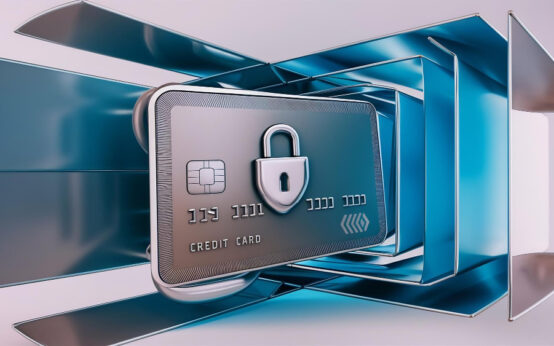Are you looking for Low APR Credit Cards that offer great rates and benefits? In this guide, we’ll explore the best options available in 2023 and how to choose the right one for your financial needs. From understanding what these cards are to learning how to qualify, we’ve got you covered.
What Are Low APR Credit Cards?
Low APR Credit Cards are credit cards that come with a lower Annual Percentage Rate (APR) compared to the average credit card. The APR is the yearly interest rate that you will be charged on any outstanding balance if you do not pay off your card in full each month. These cards are specifically designed to help consumers save money on interest charges, making them an ideal choice for those who carry a balance from month to month.
Types of Low APR Credit Cards
Generally, there are three types of low APR credit cards:
- Introductory Low APR Cards: Offer a very low or even 0% introductory APR for a specified period, usually between 6 to 18 months.
- Ongoing Low APR Cards: Provide a consistently low interest rate after the introductory period ends.
- Balance Transfer Cards: Allow you to transfer existing debt to the new card at a low or 0% APR for a certain period.
Understanding these different types can help you make an informed decision based on your financial needs and goals.
Benefits of Low APR Credit Cards

Low APR credit cards offer several key advantages that can significantly benefit cardholders. One of the primary benefits is the potential for substantial savings on interest charges. With a low APR, more of your payments go towards paying down the principal balance rather than interest, which can help you reduce debt faster.
An additional advantage is lower monthly payments. With a reduced interest rate, the amount you have to pay each month decreases, making it easier to manage and budget your finances. This can be particularly beneficial for individuals carrying large balances or those who need to spread out payments over time.
Another benefit is the enhanced financial flexibility. Lower interest rates allow you to make larger purchases or handle unexpected expenses without incurring high additional costs. This can lead to better financial management and less stress about interest piling up.
Low APR credit cards can also help improve your credit score. By making consistent, on-time payments and keeping your balance low, you minimize the amount of interest accrued and demonstrate responsible credit behavior. This positive financial activity can be reflected in your credit report, potentially leading to higher credit scores over time.
Lastly, some low APR credit cards come with additional perks such as cash back, rewards points, or travel benefits. These extra features can provide additional value and enhance the overall appeal of the card, making it a more attractive option for savvy consumers looking to maximize their financial benefits.
How to Qualify for a Low APR Credit Card
Securing a low APR credit card can save you a significant amount on interest payments. To qualify, follow these steps:
1. Check Your Credit Score
Your credit score plays a crucial role in determining your eligibility. Most low APR credit cards demand a good to excellent credit score. Aim for a score above 700 to improve your chances.
2. Reduce Existing Debt
High levels of existing debt can negatively impact your application. Pay down credit card balances and loans to reduce your debt-to-income ratio. This demonstrates to lenders that you’re a responsible borrower.
3. Maintain a Stable Income
Lenders look for stability. A consistent income stream increases your reliability as a borrower. Provide proof of steady employment to boost your chances of qualifying for a low APR credit card.
4. Review Your Credit Report
Inaccuracies on your credit report can hinder your qualification process. Obtain your report from major bureaus and dispute any errors to ensure it reflects your creditworthiness accurately.
5. Limit New Credit Applications
Each credit application triggers a hard inquiry, which can lower your score. Avoid applying for multiple credit products in a short period. Focus on the card that offers the best terms for your situation.
Top Low APR Credit Cards for 2023

Top Low APR Credit Cards for 2023
When it comes to finding the best low APR credit cards for 2023, there are several options that stand out due to their competitive interest rates, rewards programs, and additional benefits. These cards are designed for those who want to minimize interest payments and manage their finances more effectively.
One of the top choices is the Chase Freedom Unlimited®, which offers a 0% introductory APR for the first 15 months on purchases and balance transfers. After the introductory period, the APR ranges from 14.99% to 23.74%, depending on your creditworthiness. This card also provides 1.5% cash back on all purchases, with no minimum to redeem.
Another excellent option is the Citi® Double Cash Card. This card offers 2% cash back on all purchases—1% when you buy, and an additional 1% when you pay your bill. It features an 18-month 0% introductory APR on balance transfers, making it a great choice for those looking to consolidate debt. After the introductory period, the APR is 13.99% to 23.99% based on your credit score.
For those with excellent credit, the BankAmericard® Credit Card is a standout pick. It comes with a 0% introductory APR on purchases and balance transfers for the first 18 billing cycles. Post-introductory APR ranges from 12.99% to 22.99%. While this card does not offer rewards, its low-interest rates can save you a significant amount over time.
The Discover it® Cash Back card is also worth mentioning. It features a 0% introductory APR for the first 14 months on purchases and balance transfers. After that, the variable purchase APR ranges between 11.99% and 22.99%. You can earn 5% cash back on everyday purchases at different places each quarter, such as Amazon.com, grocery stores, restaurants, and gas stations, up to the quarterly maximum when you activate.
Finally, the Wells Fargo Active Cash® Card offers unlimited 2% cash rewards on purchases. It includes a 0% introductory APR for 15 months from account opening on purchases and qualifying balance transfers. The variable APR ranges from 14.99% to 24.99% thereafter. This card is ideal for those who want a straightforward, high-reward, low-interest option.
Exploring these top low APR credit cards can help you find the best option that suits your financial needs. Whether you are looking to reduce interest payments or earn rewards, there is a card that aligns with your goals.
Tips for Using Low APR Credit Cards Wisely
When managing low APR credit cards, it’s essential to pay your balance on time each month. This helps you avoid interest charges and keeps your credit utilization low, positively affecting your credit score. Set up automatic payments or reminders to ensure you never miss a due date.
Avoid maxing out your card. Keeping your balance below 30% of your credit limit can enhance your credit score and prevent financial strain. Track your spending and adjust your budget as needed to stay within your means.
Consider using the low APR card for essential purchases and larger expenses you plan to pay off over time. This approach takes advantage of the low interest rate, making it easier to manage significant bills while minimizing charges.
Regularly review your card’s terms and conditions to stay informed about any changes that might affect your interest rate or fees. Additionally, periodically assess the market for other low APR credit cards, as better options may become available.
Finally, avoid taking on more debt than you can handle. Responsible credit card use includes maintaining a budget, monitoring your credit score, and keeping a long-term perspective on financial health.



 Best credit cards secured: your path to a stronger credit history <p style='text-transform:none; line-height:20px !important; font-size:16px; font-weight:normal; color:#424242; margin: 0px; margin-top:10px;'>They offer a smart way to show lenders you’re serious about managing your finances.</p>
Best credit cards secured: your path to a stronger credit history <p style='text-transform:none; line-height:20px !important; font-size:16px; font-weight:normal; color:#424242; margin: 0px; margin-top:10px;'>They offer a smart way to show lenders you’re serious about managing your finances.</p>  The best credit cards for lounge access: your key to premium airport comfort <p style='text-transform:none; line-height:20px !important; font-size:16px; font-weight:normal; color:#424242; margin: 0px; margin-top:10px;'>With these cards, you have exclusive access to lounges, offering comfort while you wait for your flight.</p>
The best credit cards for lounge access: your key to premium airport comfort <p style='text-transform:none; line-height:20px !important; font-size:16px; font-weight:normal; color:#424242; margin: 0px; margin-top:10px;'>With these cards, you have exclusive access to lounges, offering comfort while you wait for your flight.</p>  Safe, simple, and fun: discover the best debit cards for kids <p style='text-transform:none; line-height:20px !important; font-size:16px; font-weight:normal; color:#424242; margin: 0px; margin-top:10px;'>These cards offer the flexibility and convenience that both parents and kids need.</p>
Safe, simple, and fun: discover the best debit cards for kids <p style='text-transform:none; line-height:20px !important; font-size:16px; font-weight:normal; color:#424242; margin: 0px; margin-top:10px;'>These cards offer the flexibility and convenience that both parents and kids need.</p>